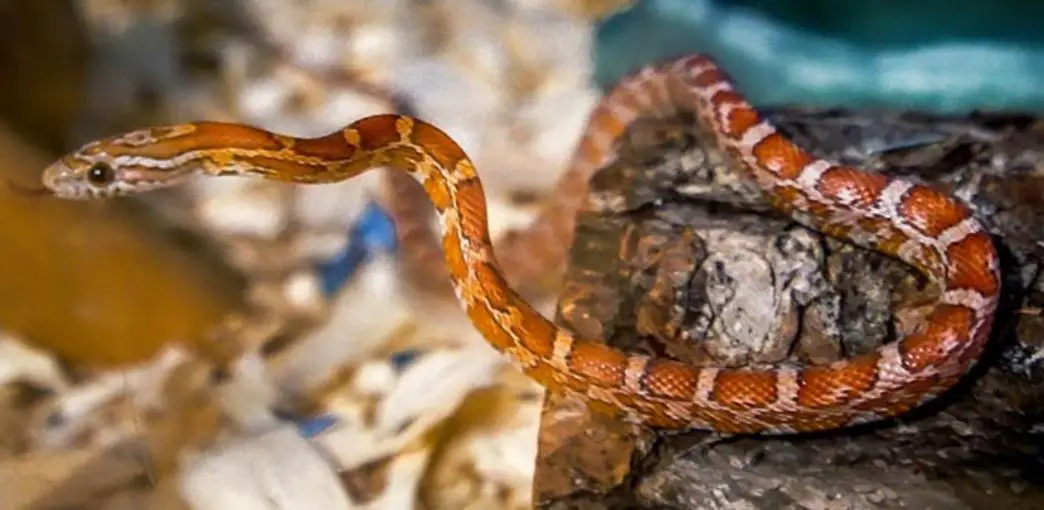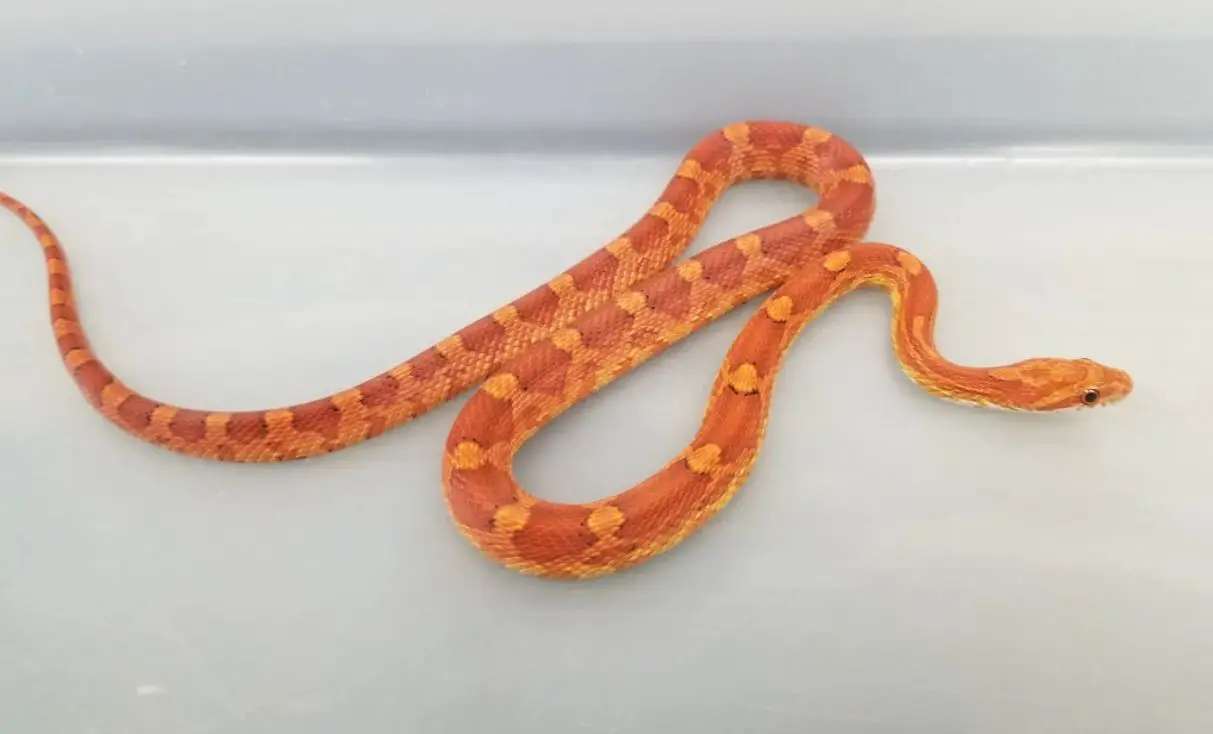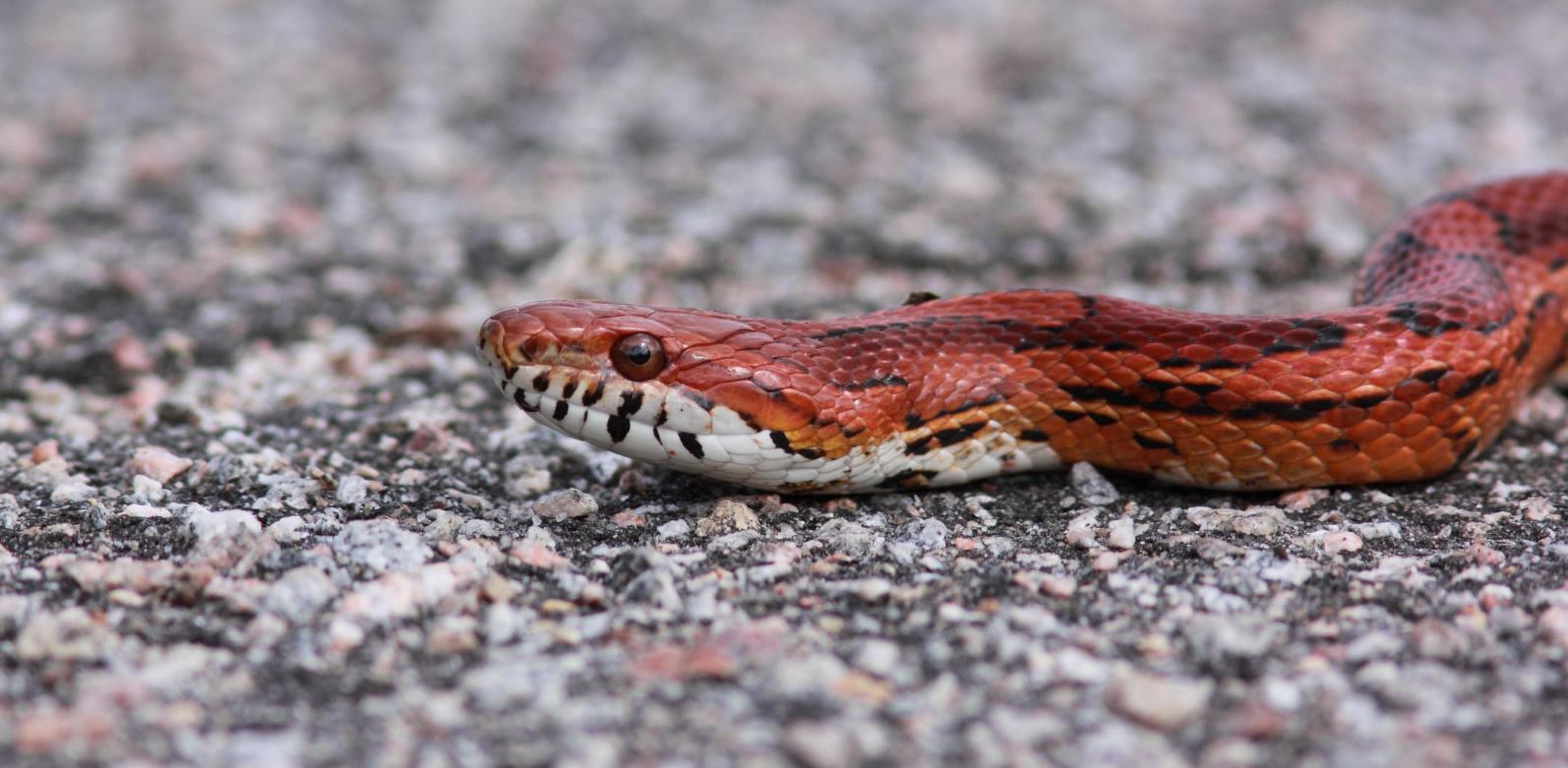Do Corn Snakes Make Good Pets – Must Read Guide

There are several reasons why I think corn snakes make good pets. Corn snakes are a very well-behaved snake and have a non-aggressive behavior.
Plus, they’re extremely easy to take care of and are low maintenance. You have various choices of colors and are fun and easy to breed. Corn snakes are perfect for beginners to owning a pet because they are so low maintenance.
They only need to be fed once or twice per week and you can handle them easily without the risk of being bitten, which makes them a very attractive first-time pet.
When you’re a corn snake owner, you can acquaint yourself with other breeders who love the hobby.
When you breed your corn snakes, you have the opportunity to let other breeders purchase your offspring, and you can buy or trade for theirs.
I believe that owning a corn snake is an addicting hobby that you will enjoy!
Why Choose a Corn Snake?

Corn snakes are the right size for a pet snake because they are small to medium size. Also, the snakes come in many patterns and colors and are a beautiful looking snake. Plus, when your corn snake is kept healthy, it will have a good appetite.
What are corn snakes like as pets?
I find that corn snakes are comfortable with all members of the family. You and your children can hold a corn snake and won’t get bitten. Corn snakes are well-behaved and docile and enjoy being handled.
Are they a good beginner pet?
If owning a pet snake is something you are planning on, a corn snake is a fantastic snake for a beginner. These snakes are one of the easiest snakes to take care of in captivity. The snake is fed once a week, and their habitat is not tricky to set up.
How to choose your corn snake?
When you are checking out corn snakes for your prospective pet, there are some things to look for:
- Body: You don’t want a snake who has protruding backbone or ribs. You want your snake to have good muscle tone. How to make sure your snake is healthy is the let the snake glide through your hands. This way you can feel for any irregularities such as ribs, lumps, or bumps.
- Breathing: Check your candidate for any bubbles or liquid around its nostrils or mouth. Look at the snake’s throat for puffiness and listen to it’s breathing. If you notice any gurgling or whistling, pass it up because the snake probably has a respiratory infection.
- Parasites: Take your hands and firmly wipe them along the snake’s body to check for external parasites. You’re checking for ticks or other parasites that would be clinging on the body or the snake’s orifices. If you find any, move onto another choice.
- Nervousness or irritability: Normally, a corn snake has a calm demeanor; however, a hatchling will defend itself. A hatchling sees your hand as a threat since it’s not mature and hasn’t been handled enough yet. This behavior is normal and will diminish once the snake learns to trust you. Too, some adult snakes could be snippy and high-strung when first held.
- Snake’s history: Ask if the snake you are looking at has a recorded history. See if the record states what it eats and how often. Inquire what kind of rodent it eats, the time of day, how the food is introduced, and the temperature of the enclosure.
How to House a Corn Snake

There is some information you will need to know before you purchase a corn snake. Be sure to have their habitat set up before you bring your snake home. It will make the transference from container to your corn snake’s new home simpler.
What habitat do they need?
Several types of housing can be used for this type of snake. A glass terrarium with a screen lid will work as well as a plastic cage designed for reptiles. A vision cage is a little more expensive, but it’s worth the money. You can house a baby in a 10-gallon terrarium. An adult snake needs to be housed in a three-foot plastic cage or a 30-gallon terrarium. All snakes will try to escape, so make sure whatever your new pet is in is escape-proof.
You will need to clean your snake’s cage at least once a month. You can spot clean as needed throughout the month. If there isn’t any fecal contamination in the water bowl, it needs to be cleaned and refilled weekly.
What accessories, do we need to own a corn snake?
If you have some of the bedding, the cup, or sack your snake arrived in, keep it. It can be placed in your snake’s new home, and the familiar scent will make your pet more comfortable.
There are two kinds of bedding which can be used for your new pet. One is Aspen bedding, which is a shredded wood which is pale wood fiber with little dust. Aspen bedding keeps the liquid and solid potions concentrated because it’s absorbent. Because Aspen bedding is interwoven, it will let your corn snake tunnel through it. Your snake will like it because it will provide caves for them to hide in.
Cypress mulch is also excellent bedding that will work well because it shares the same properties of the Aspen. But not all mulch is suitable for your corn snake. Any mulch which is made from bark or resinous wood has toxic oils or aroma will be dangerous. These mulches are especially hazardous if your cage has low ventilation or if your pet is a juvenile.
Your corn snake will want to have a dark, tight place to digest its food, for when it sheds, when resting or gravid. Your new pet will feel secure in his new home if it can barely fit within the space. If you make the area longer than wide, you can heat the space. It can be heated with either a cable under one end or an under-tank heat pad. This will give your corn snake the choice of either being cool or warm without leaving its security space.
You can add branches, rocks, and plastic plants for your pet to climb on or hide underneath. A coral snake needs several places to hide, one in a warm area, and one is a cool area. Terracotta plant pots are perfect for a shelter for your pet. A corn snake has a strong instinct to hide, so it feels safe. If it can’t hide, your snake will become unhappy and stressed, and then it won’t eat and will become ill.
Do they like to swim?
You need to keep a water dish in your snake’s habitat. It needs to be several inches in diameter, heavy and kept meticulously clean. Snakes like to defecate in their water dish, so when you see that, the dish needs to be cleaned immediately. Your snake may not swim in its bowl, but it might soak before shedding its skin.
Another thing to consider is the humidity in your corn snake’s environment. If your snake can’t shed its skin, then the enclosure is too dry. If there is condensation and water is running down the glass, then it’s too wet. You can control the humidity by covering some sources of ventilation to increase or decrease the moisture.
Do they need a heat lamp?
70 to 88 degrees Fahrenheit is the range of temperature your snake’s home should be. Overhead incandescent heat light is the first choice as opposed to tank heat pads or heat tape, which makes it difficult to control the heat. If the habitat is kept at an even temperature, your pet won’t be able to sustain all its bodily functions.
By keeping the temperature fluctuating, it will help with your corn snake’s digestion, parasite or infection control, and embryo development. With an assortment of temperatures within your snake’s environment, it can move in and out of different areas to adjust its body temperature.
What to Feed Your Corn Snake

What you need to realize when owning a corn snake is that it eats live food. It means that your hatchling will eat baby mice. A large adult corn snake will eat a jumbo size mouse. A lot of snakes will eat a mouse that has been frozen but is thawed out for consumption.
What do they eat, and how often?
You need to be able to feed a live newborn mouse to your snake if it isn’t used to thawed mice or if it’s stressed in its new home. But you can train your snake to eat frozen mice with a little patience.
Place your snake into a container with a few air holes in it and close the lid. The darkness will let your snake concentrate on its meal and encourage it to eat it. If you put cuts into the mouse’s skin, it will ensure more complete and faster digestion. You can feed a baby snake one time every five to seven days. An adult corn snake needs fed once every seven to ten days.
How big do they get?
Adult corn snakes will grow to about 4 ½ feet, with a few growing to 5 feet. The biggest males can grow to 6 feet and weigh about 2 pounds. Females grow to an average of about 3-4 feet. After your snake is about 5 years old, you can figure that your snake is mature and will stop growing.
What’s Their Temperament Like?
The temperament of a corn snake is calm and non-aggressive, generally speaking. A hatchling may bite if startled and will hide, flee or defend itself. But hatchlings can’t really harm you.
Do corn snakes bite, and are they dangerous?
Corn snakes are non-aggressive, but a hatchling may bite if startled.
How often do they shed?
Your snake will shed about two to four times a year. Your snake will shed more frequently if it has a skin injury or if it’s fed heavily. The full shedding process of your snake will take about a week to complete. While your snake is shedding, it won’t want to be handled.
Types of Morphs

Corn snakes are bred in an assortment of colors or morphs. The color of the corn snake doesn’t affect the care. It just depends on what color you like best.
What are the different Corn Snakes Morphs?
Wild corn snakes usually have a black pigment that is over the snake’s body, which mutes the reds and yellows. Then an aberrant morph, which was an albino, completely erased the black pigment leaving just the reds and yellows. When the pure albinos were mated, the color showed up in the offspring. The colors now include grey, red, striped, and white.
How often should I handle my pet corn snake?
After your corn snake has settled in and been fed two or three times, it can start to be handled. Start by handling your pet for short periods. Approach it from the side instead of the top like a predator. Lift it firmly but gently, and it will start to tame quickly.
Why are snakes called corn snakes?
These snakes are called corn snakes because it hunts for rodents around cornfields and corncribs. Also, the pattern on its stomach looks like Indian corn.
Keeping Your Corn Snake Healthy
Keeping your corn snake healthy is essential because if kept in peak condition, your snake can live up to 15 to 20 years.
What health problems can they have?

Corn snakes can get a bacterial infection on their mouth known as mouth rot. The bacterial infection causes salvia bubbles around and in the mouth. Plus, it will cause inflammation in those areas as well. If not treated, your snake’s teeth could fall out because of a bone infection
Your snake can develop a fungal infection, which is known by discoloration of the skin. Snakes are also subject to respiratory infections, which you can tell by wheezing or open-mouthed breathing. If your snake has any of these health issues, it will need to be seen by a reptile vet.
Conclusion
Corn snakes are pretty active but docile and easy to tame. Corn snakes are an excellent choice for both an adult, and children would want to own a pet that’s a snake. For more information of the care and upkeep of your corn snake, click the link below:
references:
https://www.reptilecentre.com/blog/2010/01/corn-snakes-make-great-pets/
https://pethelpful.com/reptiles-amphibians/Introduction-to-Keeping-Corn-Snakes-as-Pets
https://www.thesprucepets.com/corn-snakes-1236771
http://www.reptileknowledge.com/care/corns-as-pets.php
http://www.reptilesmagazine.com/Care-Sheets/Snakes/Corn-Snake/
https://www.youtube.com/watch?v=4aLnZd4ABk8
http://www.reptilesmagazine.com/How-To-Choose-And-Care-For-A-Corn-Snake/


